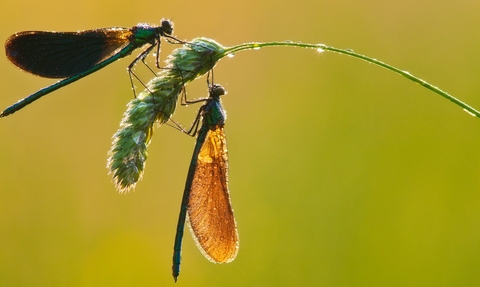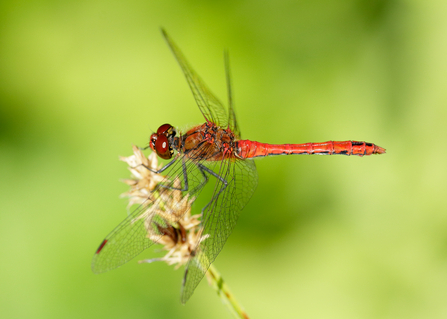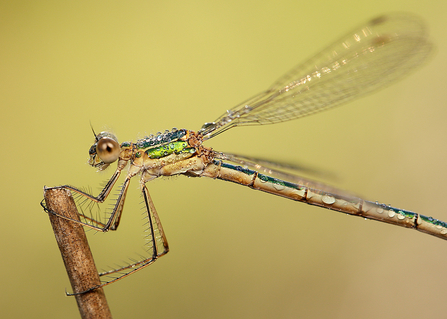
Beautiful demoiselle (Calopteryx virgo), River Char, Charmouth, Dorset, England, UK - Guy Edwardes/2020VISION
Find London's dragonflies and damselflies
We are looking for 'Dragonfly Detectives' to help us find London’s hawkers, chasers, skimmers and damsels
Between May and September London’s streams, rivers and ponds light up with the dazzling, darting flight of dragonflies and damselflies.
These attractive and fascinating insects, collectively known as odonata, thrive where the water is clean and are a great indicator species of healthy ecosystems. However, little is known about their distribution across London.
We are asking Londoners to become Dragonfly Detectives and help us create a map of where they live in the city. If you see a dragonfly or damselfly in your garden, local park, nature reserve, or anywhere else, you can add it to our online database.
Identification
Dragonflies and damselflies spend most of their lives as predatory, subsurface larvae, dependent on a good supply of aquatic insects on which to feed. As adults they are highly mobile, quickly colonising new habitats as water quality improves, or as climate change opens up new territories.

Dragonflies are some of Britain’s largest insects with a body length of up to 8.5cm and wingspans that can reach 12cm. Dragonflies have a strong, purposeful flight, with some species capable of travelling up to 2km in search of smaller insects, which they catch in the air. The skillful flight and predatory behaviour of dragonflies is reflected in some of their names: hawkers, chasers and skimmers.

Emerald damselfly by Iain Leach
Damselflies are smaller than dragonflies, typically being around 3.5cm – 4.5cm long. When resting, a damselfly’s wings are held closed and folded together across the top of their backs (unlike dragonflies, whose wings remain outstretched, like the wings of an aeroplane). Damselflies also have a weak, fluttery flight and tend to swarm near water and bankside vegetation.
Find out more
Images and descriptions of many dragonfly and damselfly species can be found here. A comprehensive database of dragonfly and damselfly species can be found on the British Dragonfly Society website (please note, the information provided here is from a national context, so not all these species are found in London).
If you have taken a photograph but are not sure which species it is, email the image to enquiries@wildlondon.org.uk. You can also upload photos directly to the survey page.
The Dragonfly Detectives survey is hosted by the wildlife record centre Greenspace Information for Greater London.
